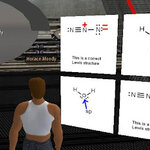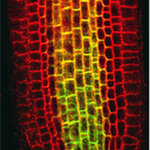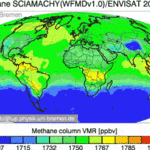Science Education & Policy

Yesterday, I gave my first talk at the March07 ACS meeting on Teaching Organic Chemistry with Blogs and Wikis. The screencast is now available.
It was part of a symposium on Using Social Networking Tools to Teach Chemistry organized by Harry Pence and Andrea Gay. Joanna Scott gave a most interesting talk about Nature's experimentation with Second Life and the great possibilities for communicating research work. Harry is also involved with Second Life. Indeed I met him in world by accident a few days ago!
Largely because of Beth Ritter-Guth's tireless dedication to implementing educational…

An international team of researchers has discovered that two types of plant proteins are at work in the transport of an important growth hormone, a finding that could have applications in creating plants with specific characteristics.
Previously thought to function independently, the two types of proteins were shown to comprise mechanisms that work both cooperatively and synergistically, depending upon their location in the plant. Together they control the movement of auxin, a hormone that, among other functions, regulates plant architecture, tissue development and flowering time.
In this…

Although intelligence is generally thought to play a key role in children's early academic achievement, aspects of children's self-regulation abilities—including the ability to alternately shift and focus attention and to inhibit impulsive responding--are uniquely related to early academic success and account for greater variation in early academic progress than do measures of intelligence. Therefore, in order to help children from low-income families succeed in school, early school-age programs may need to include curricula designed specifically to promote children's self-regulation skills…

The first published study on the environmental impact of manufactured nanoparticles on ordinary soil showed no negative effects, which is contrary to concerns voiced by some that the microscopic particles could be harmful to organisms.
Scientists added both dry and water-based forms of manufactured fullerenes - nanosized particles also known as buckyballs - to soil. The nanoparticles didn't change how the soil and its microorganisms functioned, said Ron Turco, a Purdue University soil and environmental microbiologist.
Concerns surround the increased use of nanoparticles in everything from…

The 2004 Sumatra-Andaman earthquake and resulting tsunami are now infamous for the damage they caused, but at the time many scientists believed this area was unlikely to create a quake of such magnitude. In the March 23 issue of the journal Science, a geophysicist from Rensselaer Polytechnic Institute urges the public and policy makers to consider all subduction-type tectonic boundaries to be "locked, loaded, and dangerous."
"Seismologists have long tried to determine which subduction boundaries are more likely than others to break," says Robert McCaffrey, professor of earth and…

Marie Godfrey has left a comment on one of my posts recently, and asked me whether I’d like to write about her blog and the Genetic Alliance non-profit organization. They both try to make genetics more readable and understandable for laymen and people with genetic conditions. So first, let’s take a deeper look at GeneForum and the Genetizen blog:
Advances in genetics and biotechnology are impacting society in provocative ways. The Genetizen is written by a select group of scientists, bioethicists, and healthcare professionals who provide you with expert analysis and commentary on many…

Scientists from NOAA’s Earth System Research Laboratory (ESRL) announced today a new tool to monitor changes in atmospheric carbon dioxide and other greenhouse gases by region and source. The tool, called CarbonTracker, will enable its users to evaluate the effectiveness of their efforts to reduce or store carbon emissions.
The online data framework distinguishes between changes in the natural carbon cycle and those occurring in human-produced fossil fuel emissions. It also provides verification for scientists using computer models to project future climate change. Potential users include…

Based on three years of observations from the SCIAMACHY instrument aboard ESA's Envisat, scientists have produced the first movies showing the global distribution of the most important greenhouse gases – carbon dioxide and methane – that contribute to global warming.
The importance of cutting emissions from these 'anthropogenic', or manmade, gases has been highlighted recently with European Union leaders endorsing binding targets to cut greenhouse gases by at least 20 percent from 1990 levels by 2020. Further illustrating the urgency to combat global warming, Britain became the first country…

At first glance, one might think Northeastern University junior Tanya Cashorali was bent on outshining the competition. At only 21-years-old, her achievements include three co-op jobs with top cancer scientists, one grant-funded study on tumor development, and numerous presentations to world-renowned doctors. But this young prodigy isn’t out to beat the competition, she’s out to create more; a fleet of young women who study, teach, and conduct groundbreaking high-tech research.
Cashorali is shattering the glass ceiling for budding female computer scientists, and on her rise to the top, she’s…

Coffee is pretty much old hat anymore. Sure people like it, and drink it all the time, even though it is acidic and it's bad for you (thanks Ray Kurzwiel, you're the man). Coffee makes people more alert, induces mild eurphoria, and even tastes good sometimes. But the reality is, ( and I have this knowledge because I live on campus and I know what generally goes on here), college kids are taking smart drugs more and more all the time. The most well known example is adderall, which is a highly addictive and somewhat dangerous drug if not used with caution. Nonetheless we still gave it to…